Nag Tibba Trek | Weekend Treks Near Delhi
Region: Uttarakhand
Base Camp: Dehradun
Duration: 2 Days
Altitude: 9,100 ft
Grade: Easy-Moderate
Distance: 18 km
Nag Tibba Trek Description
Nag Tibba trek, which leads to the highest summit of the lesser Himalayas, is located in the Tehri Garhwal District of Uttarakhand. The summit of Nag Tibba is at a height of 3022 m above sea level. and requires a 9 km trek from the small village of Pantwari. You can cover it on the same day easily, so it is popular among weekend treks in Uttarakhand, mainly for weekend lovers of Delhi and nearby cities.
In the local language, “Nag” translates to Snake and “Tibba” to hill or peak, so together, it means “Abode or Home of Snake Lord.”
Encircled by the Jaunpur forest range with unique flora and fauna and the years-old Nag Devta Temple offers a blissful experience. The added bonus of exceptional views of Chandrashila, Kedarkantha, Bandarpoonch, Srikanth, Swaragrohini, and Yamunotri ranges are the sparks of this enthralling trek.
This easy-to-do trek is a great choice for friends and family groups who want to go on a fun weekend trek. As it is a short distance and comparatively smooth trail, it fits perfectly in the conditions of a kids-friendly trek as well.
Let us move ahead and read all the information about this Nag Tibba trek one by one.
Nag Tibba Trek Itinerary
Drive Distance: 104 km
Drive Time: 3-4 hours
Trek Distance: 5 km
Trek Time: 2-3 hours
Altitude: 6,400 ft
Day 1 of the Nag Tibba Trek will begin in Dehradun as our base village Pantwari is 104 km away. Dehradun to Pantwari road is well-paved and cemented, you will arrive in Pantwari after 3-4 hours. En route, you will encounter markable points like Kempty Fall and Nainbagh. On Gradually ascending from Dehradun to Pantwari Road, you will observe a slow shift in development. The more you move towards Nag Tibba, the more interior places you will get to look at.
And with the excitement of Pre-Adventure, as soon as you reach Pantwari, the Nag Tibba trek will begin.
When you head from Pantwari to Nag Tibba, the best trek views will start coming in front of your eyes. Initially, you might feel a bit nervous and out of place, but as soon as your body warms up within 15 minutes of trekking, the excitement of being at Nag Tibba summit and motivation will step up.
After trekking for 2 Km, when you look back, the first thing you will see is the beautiful Pantwari Village amid green and comparatively elevated areas. Enjoying these beautiful, rare views of Uttarakhand, as you proceed, you will see a small cemented water reservoir alongside the trail. In this reservoir, a pipe flows out the fresh water. Beyond this point, there will be no such water stream, so you must fill your water bottle for the further trek.
Thereafter, passing through the grasslands and forests, you will trek for about 1.5 Km, and reach your tonight’s base camp at the Kathian Campsite, which also known as Goat Village. In this region, there is a plain Plateau, which is a kind of elevated land on which high-scale camping is possible. And so there are multiple camps in this location. Most likely, you will reach there during sunset, so do not miss this precious chance to watch the sunset from here.
Tonight, you will stay at our campsite at Kathian. Here, the camp nights are usually celebrated around the bonfire, singing folk or Bollywood songs. Besides this, the people enjoy Maggi, or Rajma Chawal, at this high-altitude Campsite. So you can also give your taste buds a try. During the night, you can see the clear sky full of stars and it’s a perfect location for stargazing.
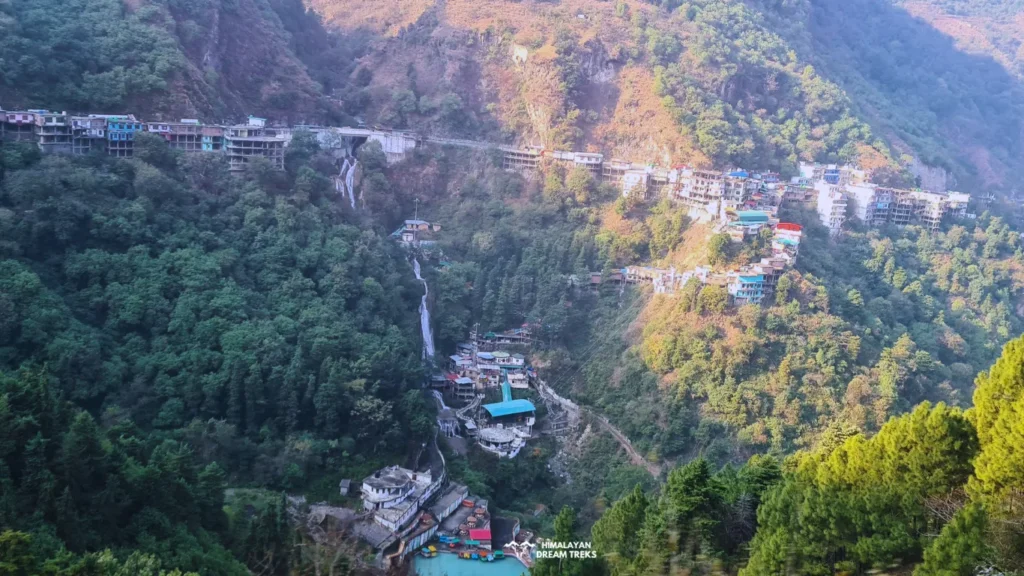

Trek Distance: 13 km
Trek Time: 6-7 hours
Altitude Gain: 2,750 ft
Altitude: 9,100 ft
On Day 2 of the Nag Tibba trek, if you want to reach the Nag Tibba summit during sunrise, then you must leave the Goat Village/Kathian Campsite before 3 hours of the predicted sunrise time. Ideally, you should wake up at 2:30 am, and get freshen up for the trek. To overcome sleepiness, you can drink tea or coffee before beginning the trek. Then, with the Trekking guide, you should leave the Goat Village Campsite at 3 am and just follow your guide’s instructions. You must wear the headtorch on this trek for better visibility in the early dark hours.
Passing from the curvy, zig zag, ascent, and descent trail, you will reach your destination, Nag Tibba Summit, in 2 to 3 hours. The beauty of sunrise at this point of 3022 m altitude is truly beautiful and something very precious but unexplainable. There, you’ll see a Trishul embedded at the final point of Nag Tibba Summit, and it looks so enchanting to see the Trishul of Lord Shiva and the rising sun over the horizon.
Besides this, if you have no desire to watch the sunrise from the summit, then you can start trekking at 6 am. You will reach the summit by 9 am, and then the time and moment at Nag Tibba summit will be yours. From this Nag Tibba summit point, you will see many famous peaks like Kalanaag, Swargrohini, Bandarpoonch, also Doon Valley.
After the Nag Tibba Summit climax experience, we will start descending for the Pantwari. Passing from forests of Rhododendrons, Oak, and Sal trees, you will reach the Nag Tibba temple. This is the main temple dedicated to Nag Devta, which is why this summit is known as Nag Tibba. Here, you can spend 15 to 20 minutes.
After a short break, we will resume trekking down and reach the Pantwari after about 4 hours. From Pantwari to Dehradun, there is a motorable road, so you can return to Dehradun by taxi or two-wheeler or choose to travel back with us as our Nag Tibba Trek Package includes transportation service to and from Dehradun.
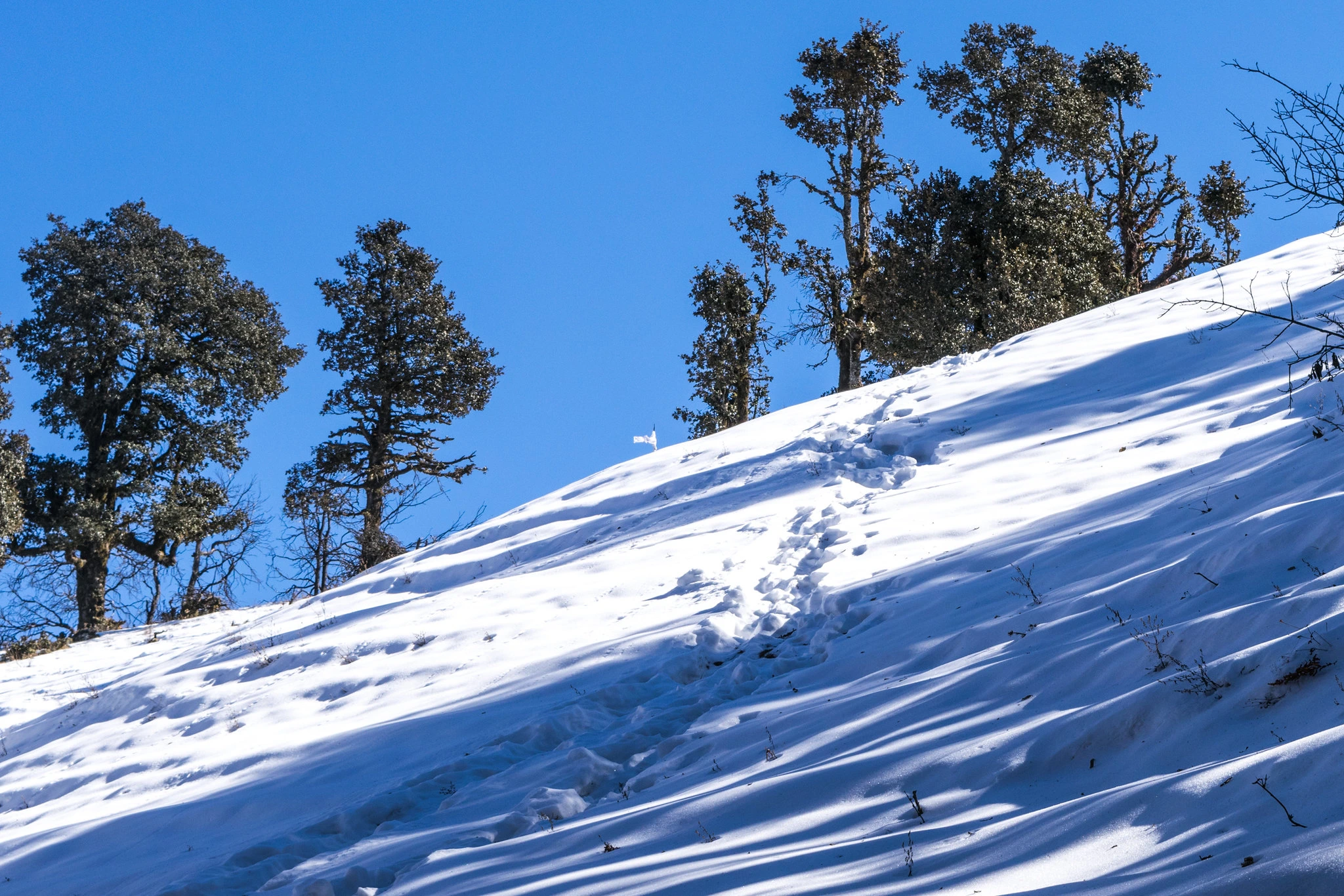
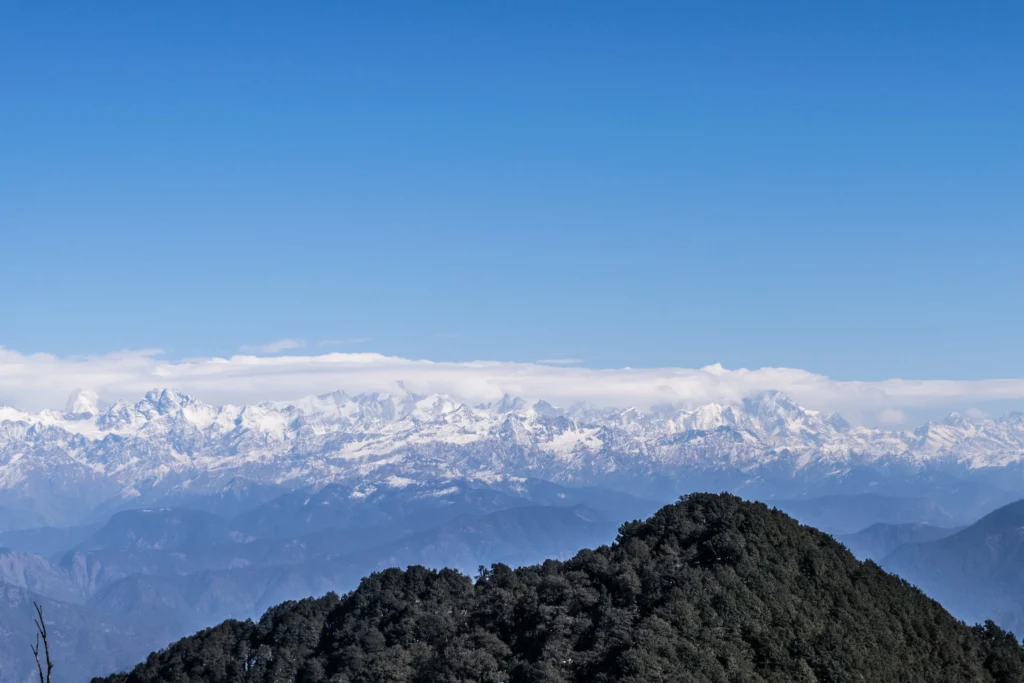
Nag Tibba Trek Package
Price Inclusion
- Stay: Accommodation is included for all days of the trek. Tents will be provided on a triple-sharing basis. Single and double sharing is available at extra cost.
- Transport: Transportation from Dehradun to Pantwari and back is covered.
- Meals: Day 1 Dinner, Day 2 Breakfast and Packed Lunch.
- Trek Equipment: All essential trek equipment is included, such as sleeping bags, mattresses, personal tents, and spikes (if needed).
- Forest Entry and Permits: All required forest entry fees, and permits are covered.
- Trek Staff: A qualified, professional team, including a certified trek leader, guide, and support staff, will accompany you.
- Emergency Kit: First aid medical kit is provided for safety.
Price Exclusion
- Meals during Transfer: Meals are not included while traveling to and from the trek starting points.
- Emergency Evacuations: Any charges related to emergency evacuation are not included.
- Personal Expenses: Any meals or accommodations outside of the provided itinerary or additional services not listed in the inclusions.
- Personal Luggage Carrying: Charges for mules or porters to carry personal luggage are not included.
- GST (5%): Included in the package cost.
Check the booking procedure here, including details on booking deposits, payment terms, and the cancellation policy.
Complete Information of Nag Tibba Trek
In this section you can find each and every detail about this trek, whether you’re finding information or booking this trek, you can get valuable insights here.
The specialty of this trek is that it is available for 12 months of the year. Every season brings a different color palette for the trek, so choose what you want to see.
Months – December to Mid-March
Temperature – Day: 14℃ to 10℃, Night: -8 degrees
In winter, the temperature around Nag Tibba summit is usually between 6°C to (-8°C). The snow layer stretches in trails, trees, grassland and meadows during this season. If you are a beginner and wanna trek on a snow trail, then Nag Tibba is the best option.
Months – March to April
Temperature – Day: 15℃ to 18℃ | Night: 0℃ to 5℃
The snow will start melting during this time, with rising temperatures and life and greenery returning to the area. You will encounter a splash of colours as various flowers begin blooming & the main highlight will be the bright pink, scarlet and oranges of Rhododendrons.
Spring is a perfect time to enjoy mild cold weather, greenery and colours which will fill your heart with the backdrop of the Great Himalayan peaks.
Months – April to June
Temperature – Day: 11℃ to 18℃ | Night: 1℃ to 4℃
Basically, you’ll feel pleasant weather while trekking in the morning and evening. Whereas on a sunny day, it might feel a little sweaty.
Months – September to November
Temperature – Day: 10℃ to 15℃ | Night: 0℃ to minus 5℃
Everything transforms in Autumn. Grass becomes dry and trees start shedding their leaves. It’s the perfect time to witness clear skies, autumn hues, and clear view of the Bandarpuch ranges.
Months – July to Mid September
Temperature – Day: 15℃ to 20℃ | Night: 8℃
The temperature remains between 8°C to 16°C, and hence, you will not feel the hot or harsh sun rays throughout your trek in the monsoon.
Additionally, the sudden rain showers and the dense clouds will accompany you on the trek, making it more exciting. During this rainy season, the meadows, and grasslands of the trek regain their greenery and spring back to life.
It serves as a great experience to undertake a trek to the Himalayan summit in monsoon, especially for nature lovers when the floras of the region are in full bloom.
However, you must pay attention to the road because it gets slippery and muddy. You can also bring some rain gear with you to avoid any sudden circumstances.
The difficulty level of this trail is an easy level trek. The trek trail is comparatively smooth. Though it is inclined, zig-zag, and somewhere sloppy, it is not that tough to walk on. The good thing is that the trail is not narrow, so it feels easy to hike on.
The last 1.5 km of the trek might appear to gain elevation a bit fast, so you must be energized for that.
The base points of the trek are the small and quaint yet developed villages of Pantwari and Devalsari. The Pantwari Route is easier and shorter than the Devalsari Route.
In a nutshell, you can plan a family trek on special occasions to this Nag Tibba summit without a second thought.
At some turns of the trek, you’ll find pebbles on the trail, but that’s not an issue if you’re wearing good trekking shoes with good soles.
Overall, Nag Tibba is an ideal trek both for beginners and professional hikers.
The kids over 5 years old can also join the hike to Nag Tibba. So it is considered a kid-friendly trek also.
Treks are all about fun, adventure, finding yourself, etc, but only for those who are mentally and physically fit. Because activities like treks, especially a Himalayan trek, challenge you on different levels in unimaginable ways and situations. Nag Tibba trek falls under easy level trek.
The trek difficulty dictates your level of fitness and preparations for it. As mentioned above, it can be an easy trek.
In the beginning, the ascend road head to Kathian Campsite campsite can be challenging as it is going to be your first day and changing altitude. The good part is that the trail is easy to follow, and the terrain is manageable, even for kids. Facilitated with a proper workout regime you can really take note of the surrounding environment and not waste time in catching your breath.
- An easy level and weekend treks require a basic fitness level, where you should focus on building your stamina and strength. Start with walking/running and include a 45-minute to 1-hour workout (cardio + strength training).
- A level-up in a fitness routine is required for an easy to moderate level trek like start aiming to run 5 km in under 40 mins, and strength training is a must.
Mental preparation includes thorough research of the trek you want to do or decide to. Understand the terrain, difficulty level, and the ways to get fit for it, look up for sudden situations that may happen, and how to tackle them. Being prepared gives you an edge to keep calm & handle a difficult situation.
1. Exercises to achieve the goal - Cardiovascular Training: Running, cycling, and swimming to boost stamina.
- Strength Training: Focus on leg exercises like squats, lunges, and step-ups for endurance.
- Core Strength: Planks, mountain climbers, and Russian twists to maintain balance on uneven trails.
- Flexibility Exercises: Stretching, yoga, and dynamic warm-ups to prevent injuries.
- Mental Conditioning: Visualisation techniques, breathing exercises, and meditation to strengthen focus and manage stress on difficult days.
Tip: For moderate to difficult-level treks, practice exercises with weights. Seek professional advice accordingly.
2. Extra Tips related to the diet, muscle recovery, and healthy lifestyle routineDiet: Incorporate proteins like lentils, eggs, paneer, whey protein, etc for fast recovery after a strenuous trek. Whole grains like wheat, barley, etc for sustained energy, and leafy greens like spinach, bitter guard, and any seasonal veggie for those extra nutrients and building the immunity system.
Muscle Recovery: Plan rest days and add stretching, relaxing yoga poses or foam rolling after every workout.
3. Lifestyle Routine: - Limit alcohol and caffeine consumption.
- Start sleeping up to 8 hours.
- Stay hydrated – drink 2 to 3 liters of water. To incorporate more nutrients, including coconut water, fruit, and vegetable juices.
Altitude Sickness happens when your body cannot adjust to lower oxygen levels at higher altitudes. This happens mainly because your body doesn’t have enough time to acclimatize to a higher altitude or not enough time to get used to lower oxygen levels.
How to Prevent AMS- - Gradual Ascent: Climb slowly to give your body time to adjust.
- Hydration: Drink plenty of water to prevent dehydration.
- Rest and Sleep: Ensure ample rest, especially as you reach higher camps.
- Avoid Alcohol: Limit alcohol and caffeine, which can lead to dehydration.
What to do - - Most Important – Inform your trek leader as well-trained leaders and experience they can assess the situation better and find solutions faster.
What trek leader may suggest. Trekkers without agency should also know these instructions - - Stop and Rest: Pause your trek to recover.
- Descend if Necessary: Descend immediately to Pantwari, our team with the vehicle and necessary help will be there for further action.
- Stay Hydrated: Drink water and avoid strenuous activity.
- Seek Medical Help: After descending our team will take you to the nearest hospitals if needed. If solo, then descend and seek the closest medical help.
- Nearest Hospital Details – Government Hospital, Nainbag
Address – H2C4+926, Nainbagh, Uttarakhand 249186
- 30 Ltr Bag Pack With Rain Cover & Comfortable Straps
- Hot & Cold Water Bottle Like Borosil & Milton
- Energy Bar, Dry Fruits & ORS
- Personal Medical Kit
- 1 Full Sleeves (Autumn, Winter)
- 1 Full Fleece T-Shirt (Autumn, Winter)
- 1 Fleece Jacket (Woollen Or Sweater)
- Poncho
- 1 Pair Thermal Inners (Upper And Lower, For winters only)
- 1 Trek Pants (Avoid Shorts & Denim Pants)
- 1 Pair of Woollen Gloves (For winter only)
- Sun Cap
- Woollen Cap (For winters)
- 4 Pairs Of Cotton Socks
- 1 Pair Of Woollen Socks (For winter)
- 1 Pairs Of Sunglasses (U/V Protected)
- 1 Neck Gaiters (Buff)
- Tiffin Box
- Trekking Shoes
- 1 Pair Of Floaters
- Hand Sanitizer & Sunscreen Lotion
- Toothbrush And Toothpaste
- Toilet Paper
- Quick Dry Towel
- Lip Balm & Antibacterial Powder
- Moisturizer
- Sleeping Bag
- Common Tent
- Mattress
- Dining Tent
- Camping Stool
- Walkie Talkie (For Team)
- Utensils
Book the air tickets from Delhi to Jolly Grant Airport of Dehradun. There are many flights running between both of these Cities, so you’ll easily find one. In case you are planning a Nag Tibba trek from another city, then also you can arrive at Dehradun by flight from your closest airport.
The Average Airfare from Delhi to Dehradun is INR 4000-7000 and the travel time is a maximum of 1 hour.
Those, who find the Railway mode comfortable, can book the tickets from Delhi to Dehradun.
The Approximate expenditure of a one-way train ticket will be about INR 600 per individual. If you want to travel on First Class AC Coach, then it will cost about INR 1400.
Road trip is one of the most exciting journeys to reach Dehradun and start the Nag Tibba Trek. It should not be any challenging matter since the city is connected with other major cities like Delhi and Chandigarh by National Highways.
It might be time consuming but the serene beauty of the Himalayan foothills will offer you a enjoyable experience.
From Dehradun, you have two options to reach the Base Camp of Nag Tibba trek, which is Pantwari.
- One is, that you go with us as we have transport included from Dehradun in the Nag Tibba Trek Package.
- The second way is that you can rent a two-wheeler for a moto ride from Dehradun to Pantwari.
- And if you are from nearby places, then you can come by your personal vehicle as well.
Let us tell you, that Pantwari, the basecamp of Nag Tibba, is a moderately developed village surrounded by grassland and elevated areas. The village has enough shops, which sell basic necessities. If you want to buy snacks for the trek (remember Leave No Trace), then must buy them from here. Beyond this village Pantwari, there is no such developed village on this Nag Tibba trekking route, so do the preparation that way.
Dehradun to Pantwari Route
- The first route from Dehradun to Pantwari is via Mussoorie and is 90 Km long. You can cover this distance in about 3.5 hours. The perk of this route to Nag Tibba’s Starting point is the view of Kempty Fall en route. Some people take a break there and enjoy the distant view of Kempty Fall.
- From Mussoorie to Nag Tibba distance is about 65 Km so it takes 2.5 hours to reach Pantwari from Mussoorie.
- Another Dehradun to Pantwari route is via Sahaspur and it is 103 km long taking 4 hours.
By taking any of these routes, you can reach Pantwari, then there starts the awaited Nag Tibba trek. As we mentioned, the Nag Tibba Trek distance is about 6 to 7 Km, so it will take about 5 to 6 hours to cover one way from start to end.
Read more info regarding the Nag Tibba Trek below
Nag Tibba, resembling its link with the Nag Devta and finds some connection with the Nag Devta Temple located near the summit. Nag Devta temple located on a vast plain ground with scarce grass looks so old and forested. Wherever you see around the temple, there are only coniferous and deciduous trees grown in a sequence at a certain distance.
To recognize the temple, you should know that this Nag Devta Temple is mainly white and adorned with yellow colour. Inside the Garbhagriha, there is Nag Devta as the deity and he is believed to be the protector of nearby villages. The temple is surrounded by a small boundary and there is a circular Kund (water reservoir) just in front of the temple. It is said that this Kund is the blessing of Nag Devta. The Pujari (Priest) of the temple has said that this water stream in the Kund comes from the underground of the sanctum sanctorum itself.
To recognize and celebrate the Nag Devta Temple’s presence, the nearby villagers trek to the temple annually. They come here with the Doli and then perform the Pooja and Rituals.
Flora
The Nag Tibba trekking trail passes through the dense forests of Jaunpur Range.
To be specific, Himalayan Fir, Birch, Rhododendrons, Deodar, and Oak are the most commonly grown trees on the trekking trail. All of these trees with smooth straight trunks and beautiful canopy look perfectly in the background of high altitude.
Besides these, there are a variety of Himalayan herbs and shrubs that cover the entire trek and enhance the naturalistic vibe. Mainly, herbs like Atish, Jatamansi, Chirayita and Kandali are found there.
Here are a few in-depth insights of Flora of this trail.
- Buransh, the colour bell flower known as Rhododendrons, is the most grown flowering plant on the Nag Tibba Trek. The petals of Buransh are edible, so it is consumed by Pahadi people often. Moreover, they utilise Buransh to make Jam, Juice and Smash.
- Kandali, a herb known as the Burn Nettle, or Bicchu Ghaas is a plant grown alongside the Nag Tibba trek. If you accidentally touch this plant then it hurts like stings and so it is known as Stinging Nettle as well. However, its medicinal uses are beyond its Stinging nature. Additionally, the Pahadi people consume Kandali Saag as well.
- Himalayan Raspberry, which looks like small yellow juicy berries, is one of the most tasty berries grown in this Nag Tibba trek. Similar to Buransh, this yellow raspberry is also consumed as jam.
Fauna
There will be Deer, Himalayan Tahr, Bear, and Fox as well. But these animals will be in the dense forests.
Besides these, you will listen to the sound of birds chirping constantly on the trek. Usually, the birds found at this altitude are the Himalayan Monal, Buzzard, and the Pheasant.
- Mussoorie
- Landour
- Lal Tibba
- Lakha Mandal
- Chakrata
- Devalsari
Gallery
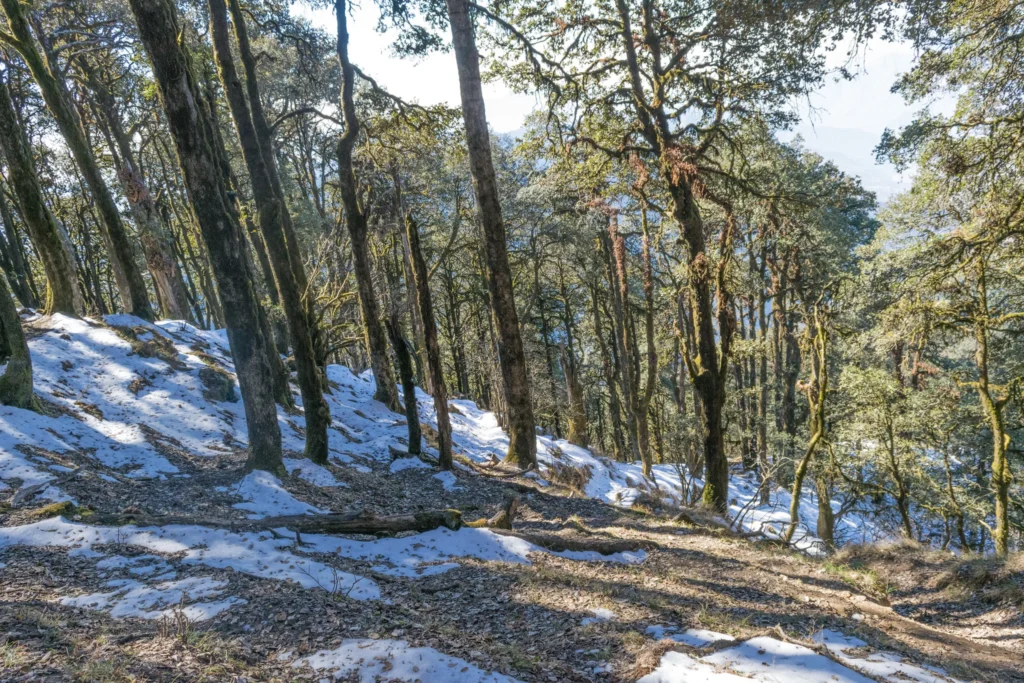
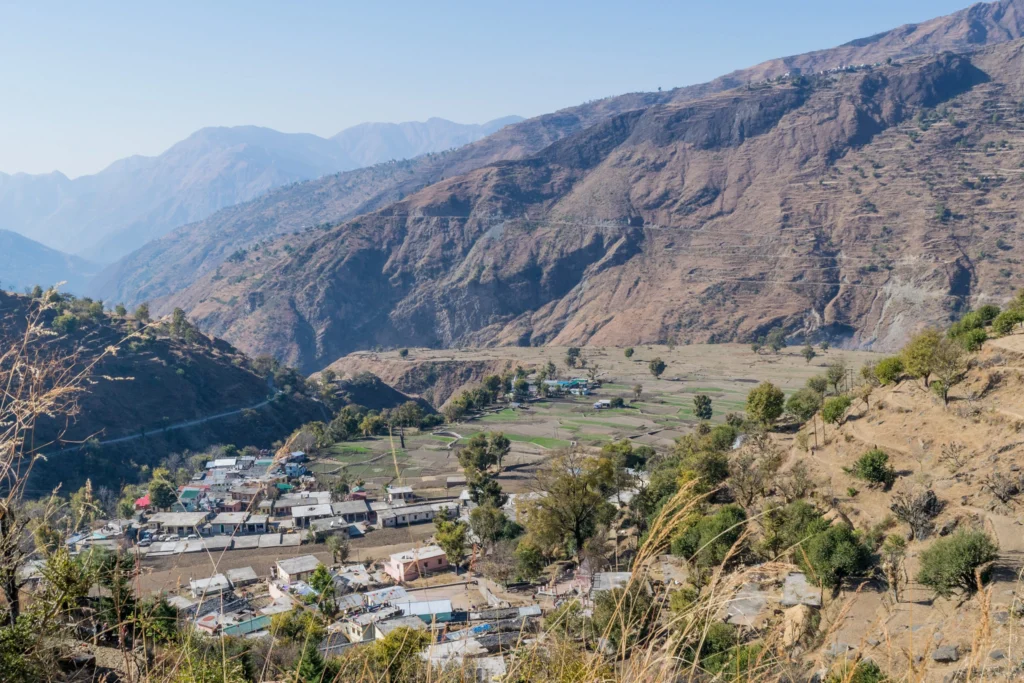

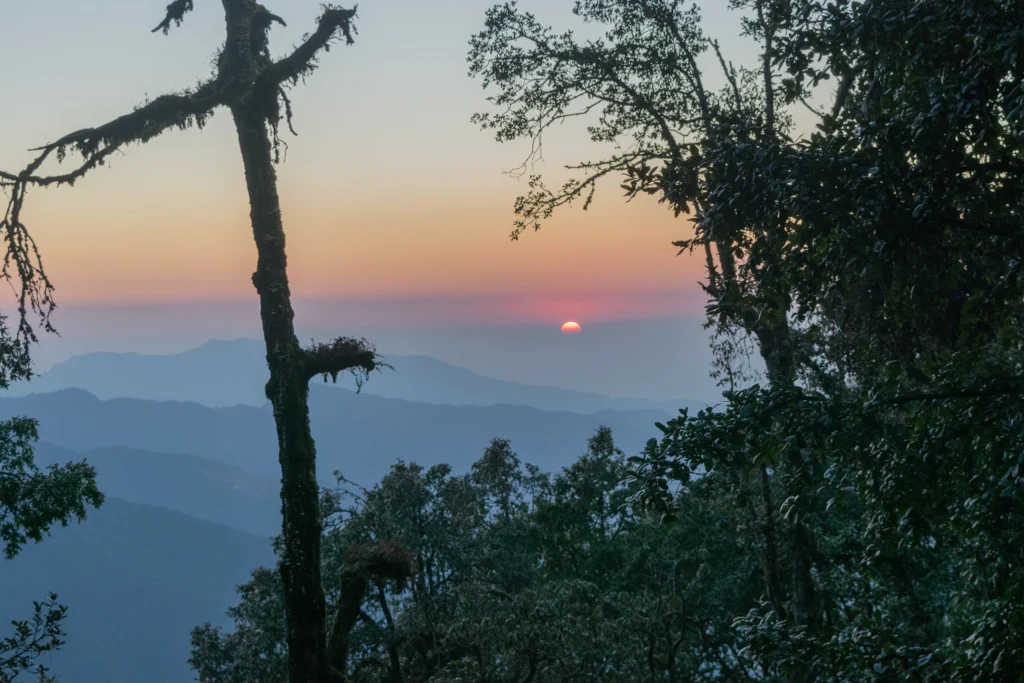
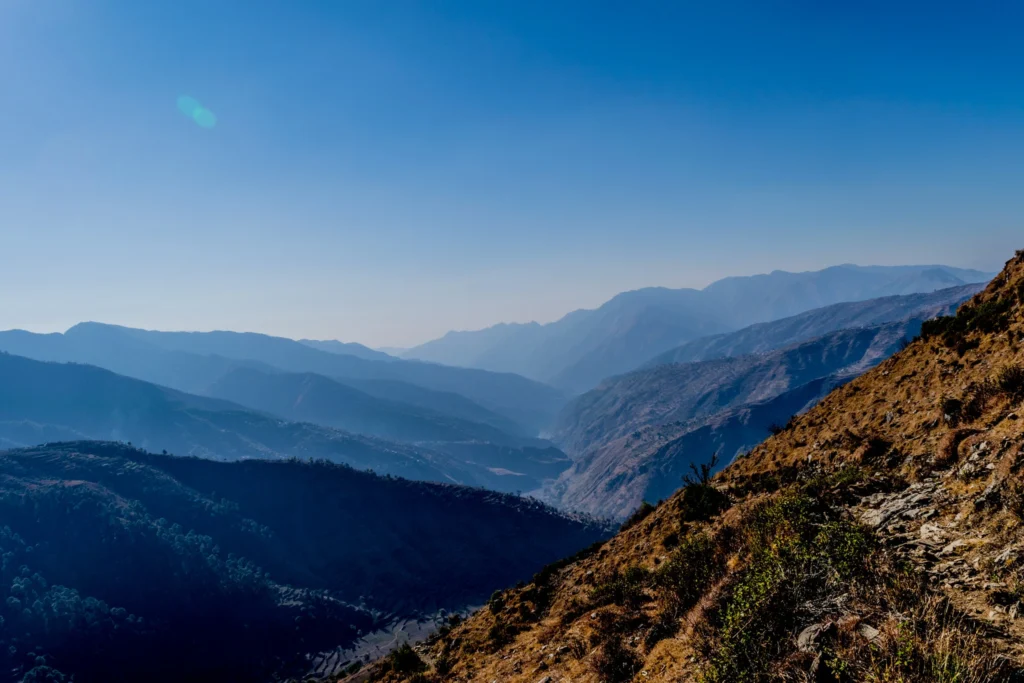
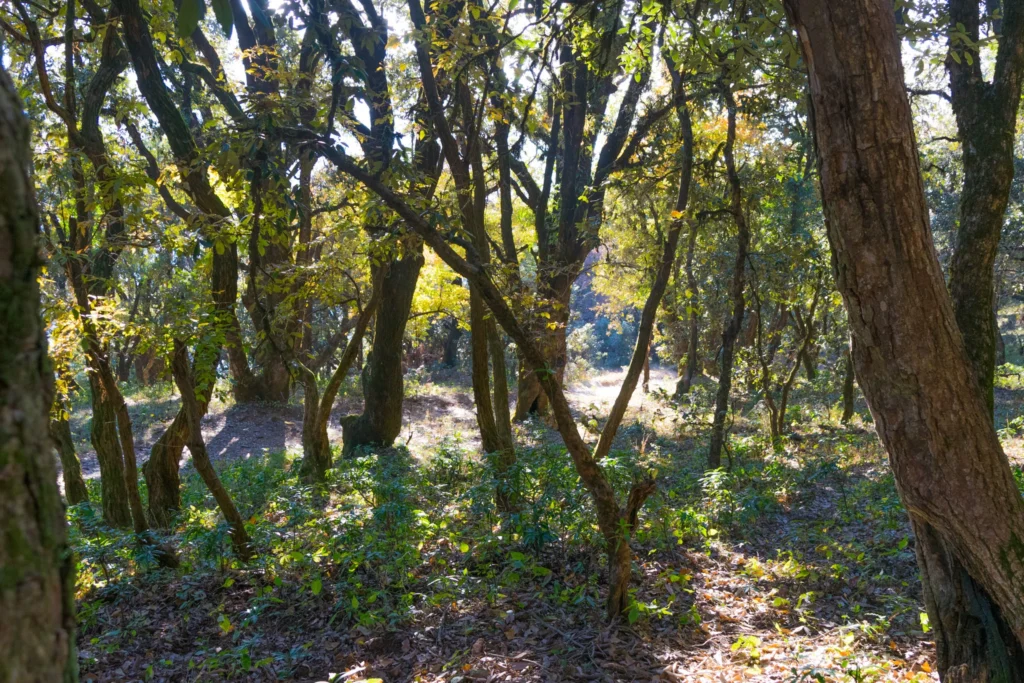
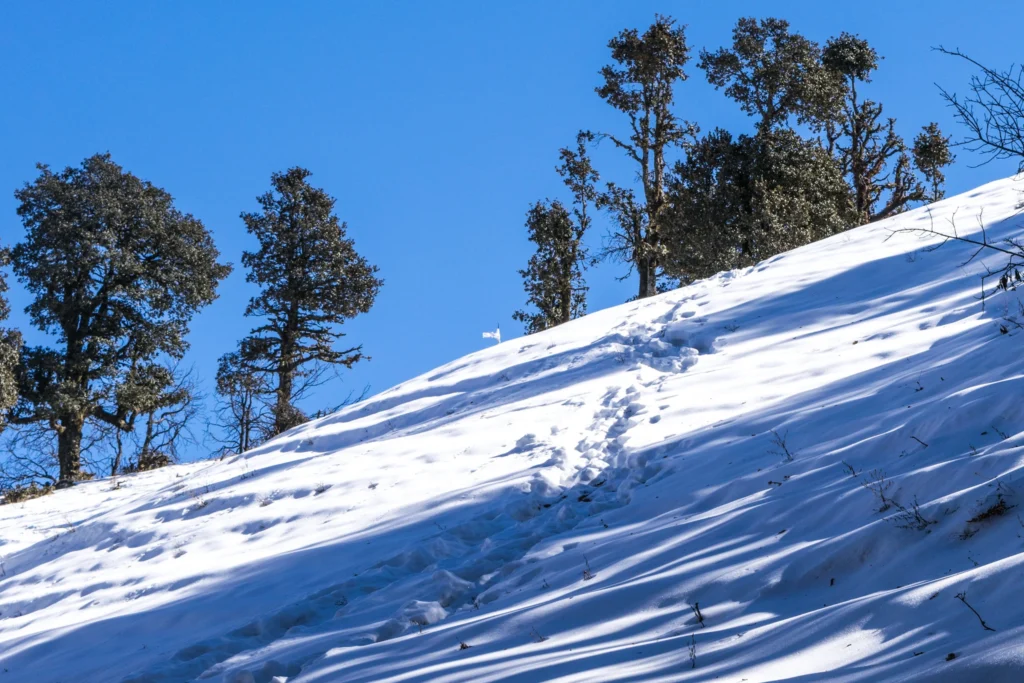
FAQs
Yes, you will find snow on the route of Nag Tibba Summit during the winter season. Along with the snowfall, there will be foggy weather on the trek. Despite the fog and snow, it displays the spectacular view of peaks such as Swargarohini, Gangotri, and Bandarpoonch, etc.
The Nag Tibba Trek offers the amenities for Camping and is even known as Camping Paradise for its unmatched scenery of its surroundings. The last base camp of the trek is in the Goat Village, which is at a 3 to 4 km distance. However, it is not advised to go camping on the Nag Tibba summit.
Usually, in the mountainous region, BSNL works better than any other SIM network. But, on this trek, there is good network connectivity, and almost all of the sims work.
You can definitely go on this trek individually. But it’s advisable to hire a guide for a better understanding of the route and to learn about its mythological or historical information that you might not get the chance to be aware of.
If you’re physically fit and start your Nag Tibba trek early in the morning, you can complete this overall trek in one day. But if you want to admire the entire route’s beauty, it might take two days.
Similar Treks
3500
/ Per Person
Available Dates
| Group Dates | Status |
| 25 Jan 2025 | Booking Open |
| 31 Jan 2025 | Booking Open |
Talk with our Trek Experts: +91 80896 93825 / +91 94565 46051
| Group Dates | Status |
| 1 Feb 2025 | Booking Open |
| 8 Feb 2025 | Booking Open |
| 15 Feb 2025 | Booking Open |
| 22 Feb 2025 | Booking Open |
Talk with our Trek Experts: +91 80896 93825 / +91 94565 46051
| Group Dates | Status |
| 1 Mar 2025 | Booking Open |
| 8 Mar 2025 | Booking Open |
| 22 Mar 2025 | Booking Open |
| 29 Mar 2025 | Booking Open |
Talk with our Trek Experts: +91 80896 93825 / +91 94565 46051

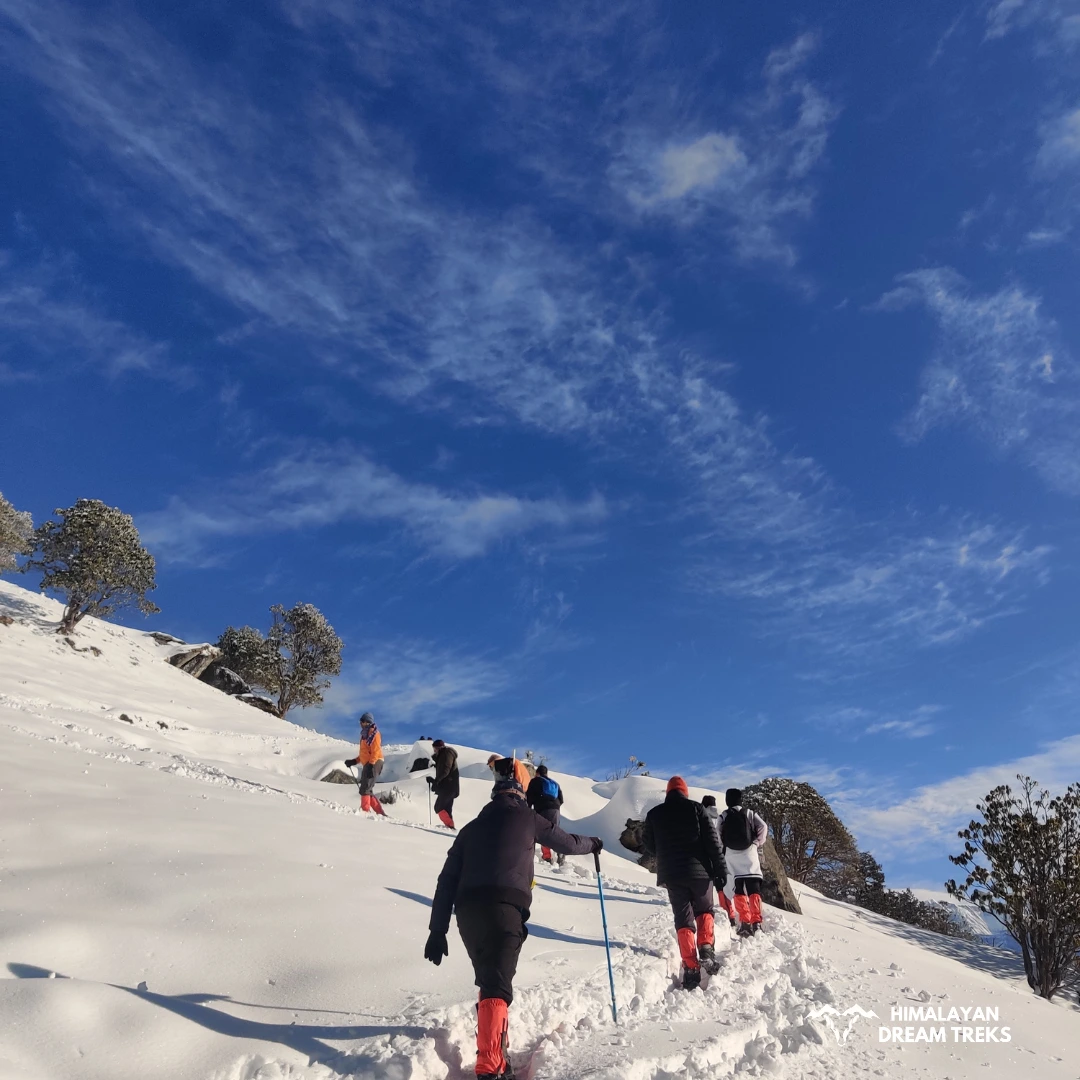
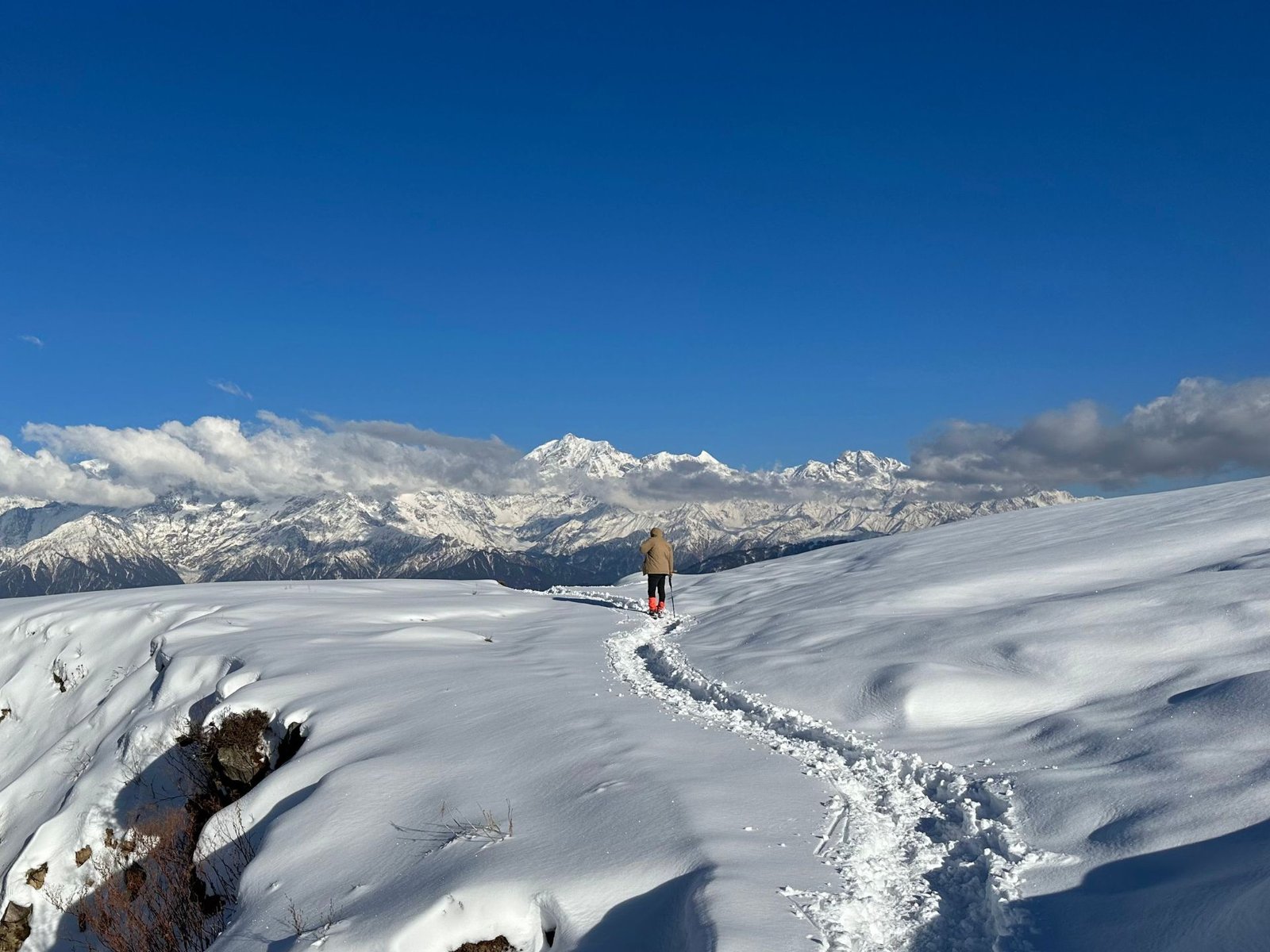
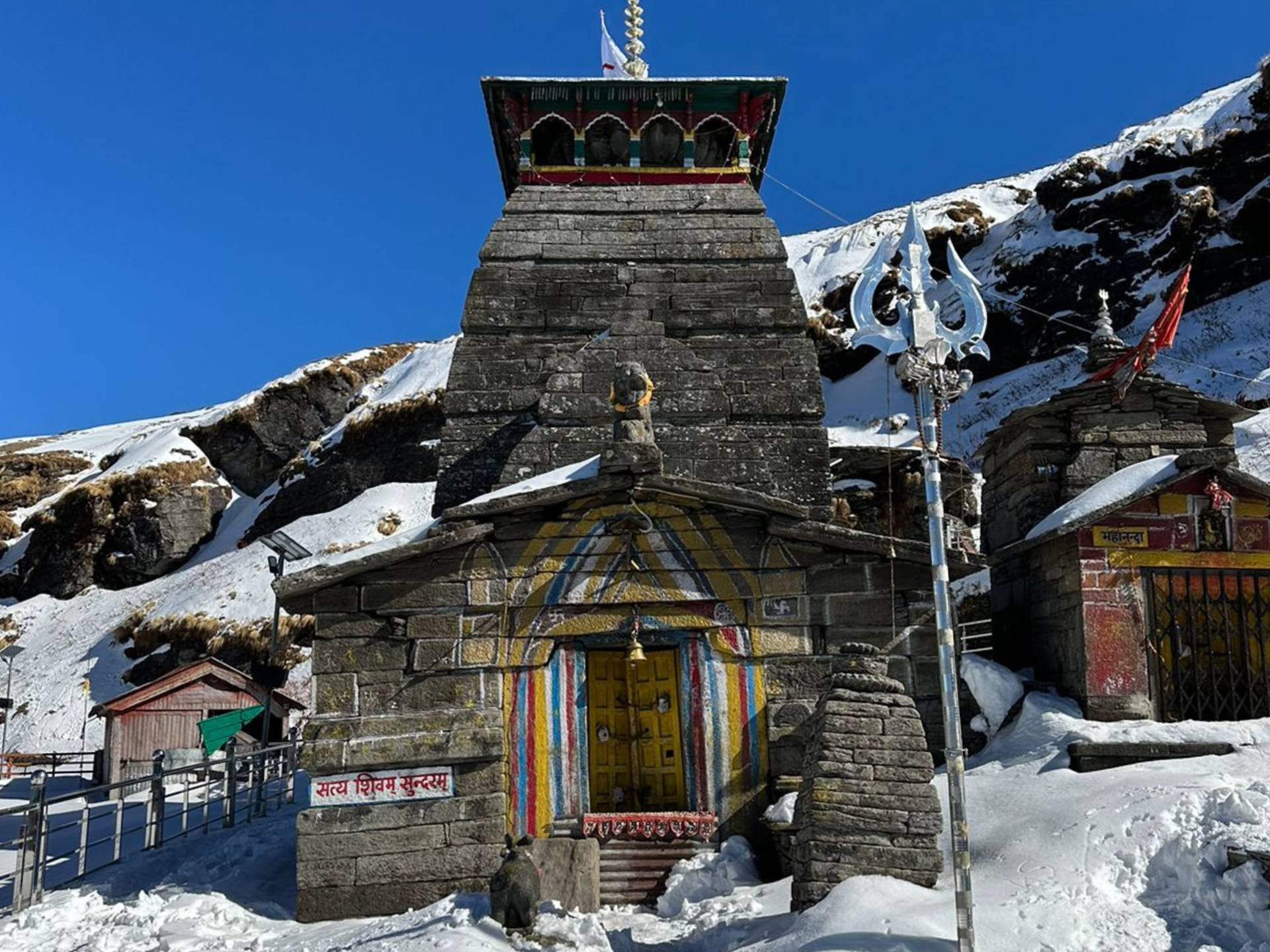


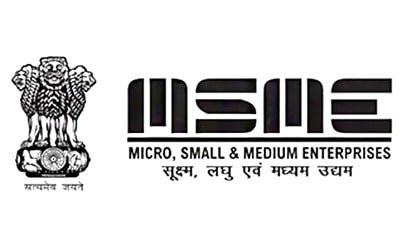

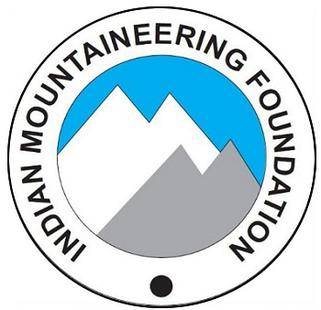
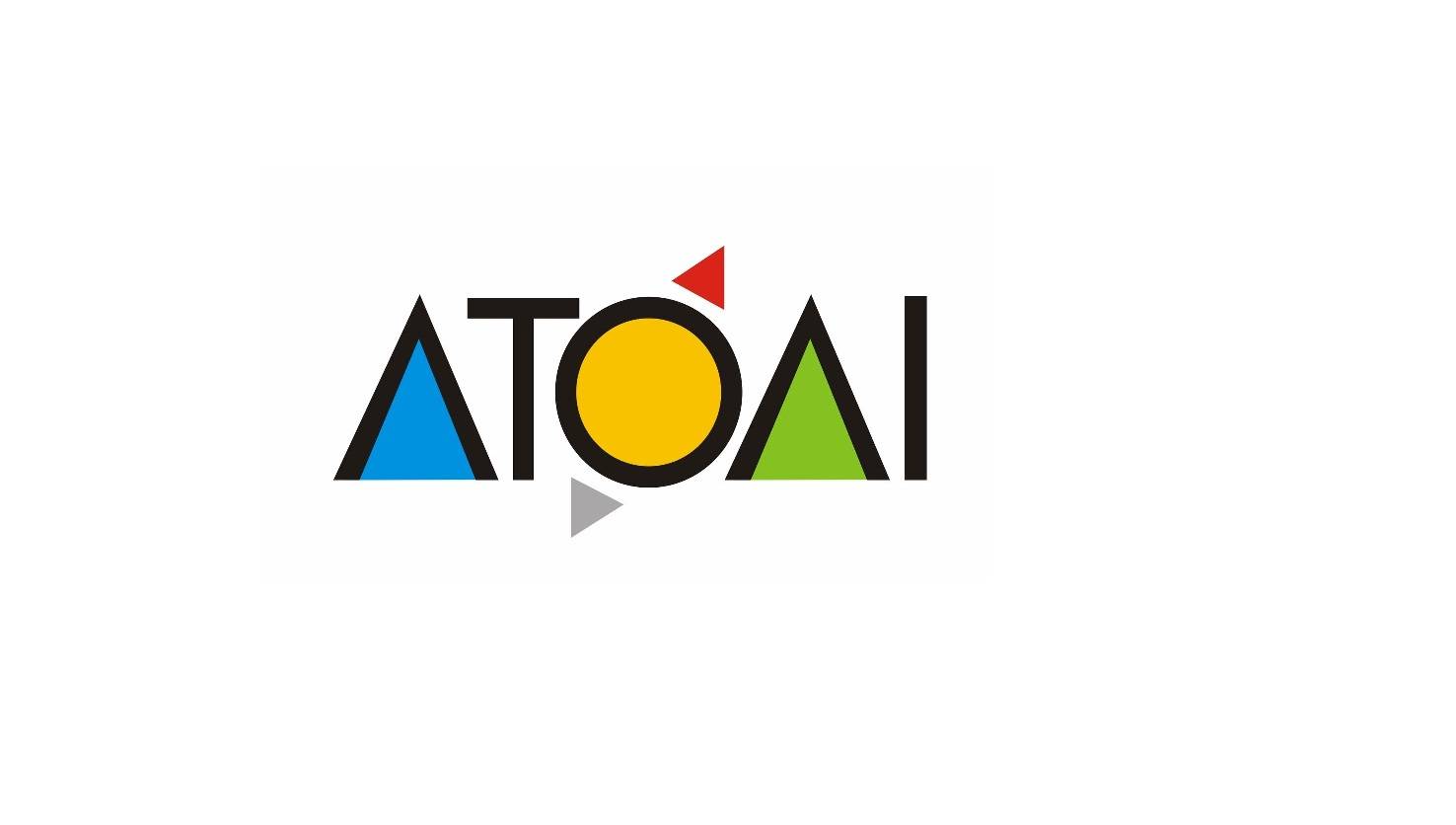






Leave a Comment